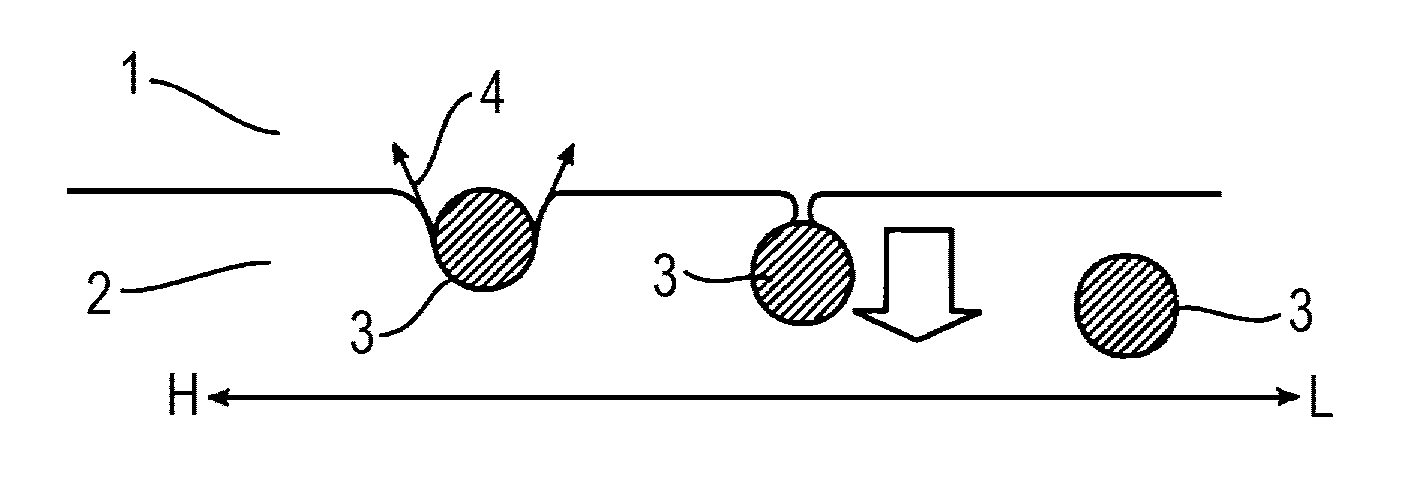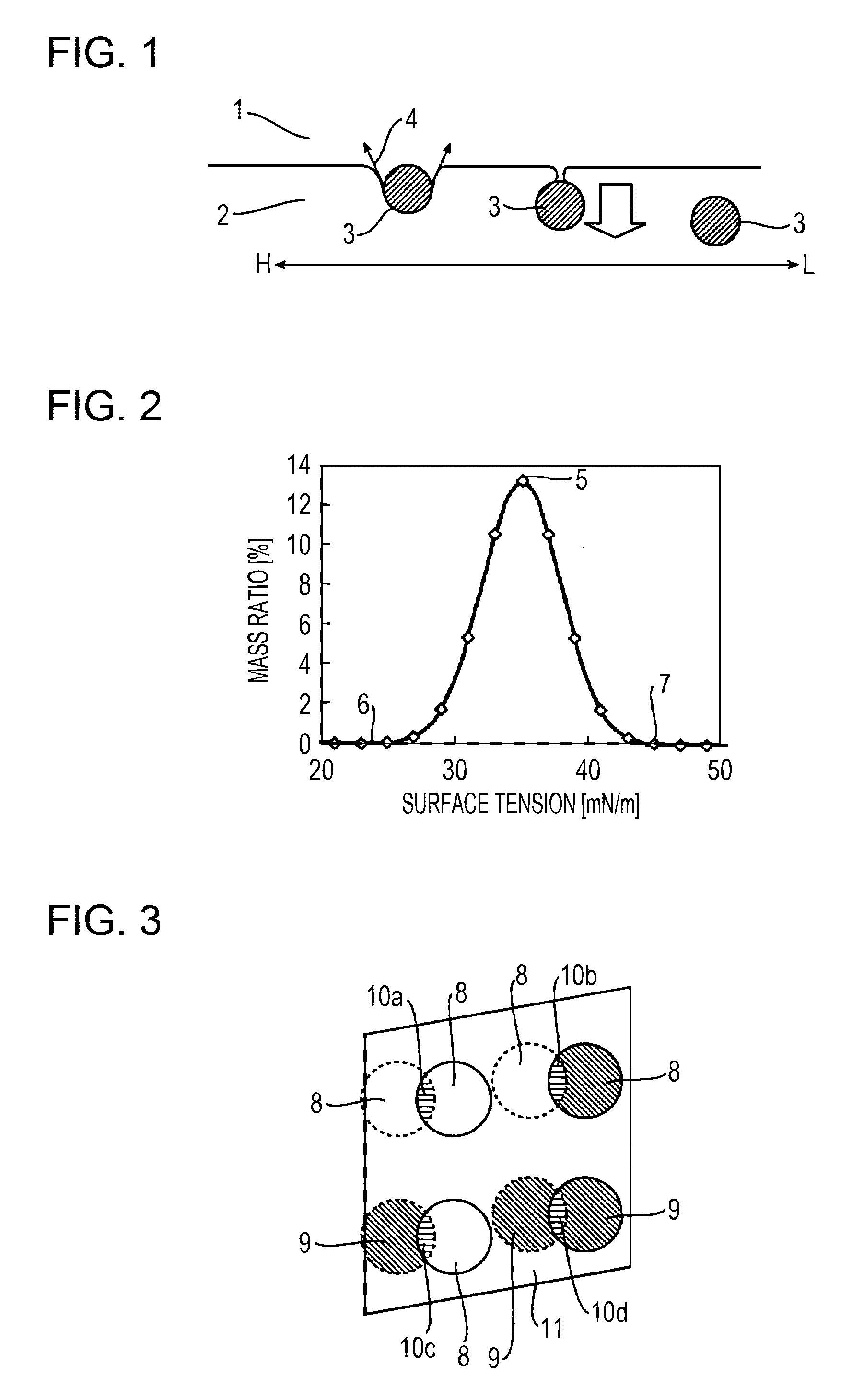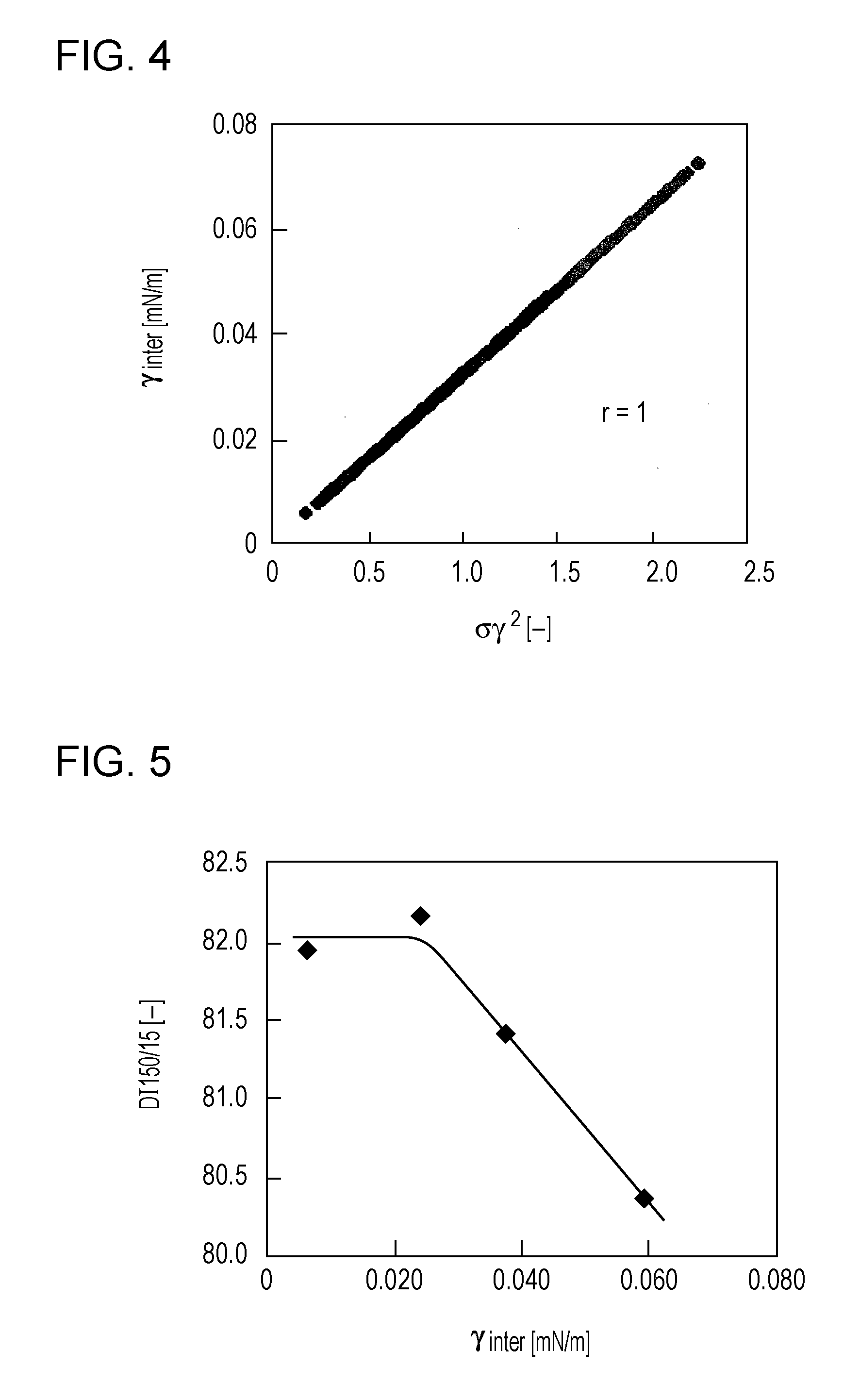Method for manufacturing coke
a blast furnace coke and coke technology, applied in the direction of instruments, fuels, material analysis, etc., can solve the problems of difficult fluidity determination, increased cost, and inconvenient determination of value, so as to increase the freedom of purchasing materials, increase the coke strength, and increase the material cost
- Summary
- Abstract
- Description
- Claims
- Application Information
AI Technical Summary
Benefits of technology
Problems solved by technology
Method used
Image
Examples
example 1
[0097]An example case where high strength coke was manufactured on the basis of interfacial tension will be described. In order to clarify the conditions for manufacturing high strength coke without depending on conventional parameters of coal properties, an experiment was carried out under the condition that conventional parameters of coal properties were constant. Thirteen kinds of coal (the kinds of coal A through M) were prepared, and, first, tests for the properties of these kinds of coal were carried out in order to determine mean maximum reflectance of vitrinite (Ro), Gieseler maximum fluidity (log MF), and surface tension derived by a film flotation method, which are conventional parameters of coal properties. Mean maximum reflectance was determined in accordance with JIS M 8816 (mean maximum reflectance of vitrinite of coal), and Gieseler maximum fluidity was determined in accordance with JIS M 8801. The measurement of surface tension by a film floatation method was carried...
example 2
[0103]An example case where high strength coke was manufactured by controlling interfacial tension under the condition that the blending ratio of coal having a low MF is high. Eight kinds of coal were prepared, and, first, tests for coal properties using these kinds of coal were carried out. The measurement items were Ro (mean maximum reflectance), log MF, and surface tension as is the case with [EXAMPLE 1] described above. The measurement methods were also the same as those in [EXAMPLE 1]. The average value of surface tension distribution was derived from the determined surface tension distribution using equation (10), and this average value of surface tension distribution was used as an index of surface tension (γ). Using the results of the tests for coal properties, 5 classes of blend (blends E through I) having different interfacial tensions were determined. In order to eliminate the influences of other parameters on coke strength, the blending ratios of all the kinds of coal we...
example 3
[0109]An example case where high strength coke was manufactured by controlling interfacial tension which is predicted from the variance of the surface tensions of all the kinds of coal constituting a coal blend. The same measurement items and the same results of the tests as used in [EXAMPLE 1] and [EXAMPLE 2] are used with the exception that interfacial tension is derived from equation (25). The calculation results of the interfacial tensions of blends A through I using equation (25) are given in Table 8.
[0110]
TABLE 8Blend Nameγinter by Equation (25)γinter by Equation (20)Blend A0.0060.006Blend B0.0240.024Blend C0.0370.037Blend D0.0590.059Blend E0.0010.001Blend F0.0030.003Blend G0.0140.014Blend H0.0220.022Blend I0.0030.003
[0111]For reference, γinter which was derived using equation (20) is also given in Table 8. As indicated by Table 8, it is confirmed that the value of γinter derived from equation (20) and that derived from equation (25) are almost the same. Therefore, it is consi...
PUM
| Property | Measurement | Unit |
|---|---|---|
| temperature | aaaaa | aaaaa |
| temperature | aaaaa | aaaaa |
| reflectance | aaaaa | aaaaa |
Abstract
Description
Claims
Application Information
 Login to View More
Login to View More - R&D
- Intellectual Property
- Life Sciences
- Materials
- Tech Scout
- Unparalleled Data Quality
- Higher Quality Content
- 60% Fewer Hallucinations
Browse by: Latest US Patents, China's latest patents, Technical Efficacy Thesaurus, Application Domain, Technology Topic, Popular Technical Reports.
© 2025 PatSnap. All rights reserved.Legal|Privacy policy|Modern Slavery Act Transparency Statement|Sitemap|About US| Contact US: help@patsnap.com



